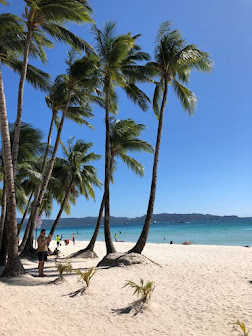The man behind "Sabine - The Movie" and "Sabine - The Book" is no other than Amazon bestselling author and friend of mine TOM ANTHONY.
I asked him ten special questions. Tom's answers are here - exclusively on my blog.
1. Who or what inspired you to write SABINE?
I first wrote what I saw driving along MacArthur Highway every day. A foreigner in any country sees differently from
a citizen who lives there. Perspective matters and is interesting. But
that was only background. I made up a fictional story including moral
issues of the day.
2. Why is your novel is entitled SABINE?
I
heard a similar name in Visayan, but made up this name and a different
pronunciation (Sa – bean) so it would be new and cause people to ask
this question.
3. It's an interracial story. Why does your story take place in the Philippines?
It
is a story about people. Race does not matter; race is not an issue in
the movie or the novella. The characters are all unique individuals,
reacting to each other and the situations in which they find themselves.
4. Can SABINE help minimizing being unbiased regarding prostitution especially in the Third World?
A
good question. I think, yes. In the movie the prostitutes are good,
caring people. This is an essential element of conflict. In fact, the
character Adriana not only overcomes her situation but teaches others
along her path to be better human beings.
5. SABINE ends happily. Can you imagine a continuation of this story?
Oh
yes. Of course – I am a writer! I have a treatment for the next movie,
but will not tell you the title yet. Hope to film next year in Davao.
What will happen next to Sabine?
6. What are your next movie plans? Details?
To
film “Rebels of Mindanao” next year in Mindanao. Based on my novel of
the same name. Most of the world has no idea of what or where Mindanao
is. This movie will put it on the map.
7. Personal: who or what is your greatest inspiration in life and why?
The
definition of “irony”: my personal hero growing up was General
MacArthur. I was inspired by him to attend West Point. He returned to
West Point when I was there to make his farewell speech. I marched in
his funeral in New York City. Now I live along the Highway named after
him and wrote a book and movie about what that highway looks like today.
I wonder what he would think to see this place now. MacArthur Highway
is often even spelled wrong.
8. What are you doing, "if you have nothing to do"?
Voltaire (the last line in Candide) wrote, “That is well-said, now let us go work in the garden.” When I take a break from writing, I plant seeds in my garden.
9. Which place comes first: Philippines, Europe, US?
No
place is first. Any place you go, you are given a bag full of stuff,
some good stuff and some bad stuff, but you have to take the whole bag.
10. How come, you know how to speak German very good and fluently?
I
always liked to cross over the next hill to see what was on the other
side. I studied German at West Point and placed first in my class in the
three-year course. I was sent on an exchange to the German Military
Academy. In business I lived 15 years in German-speaking countries. I am
still looking forward to crossing over and seeing what is on the other
side of the next hill and language gives you the eyes to see things
differently.



